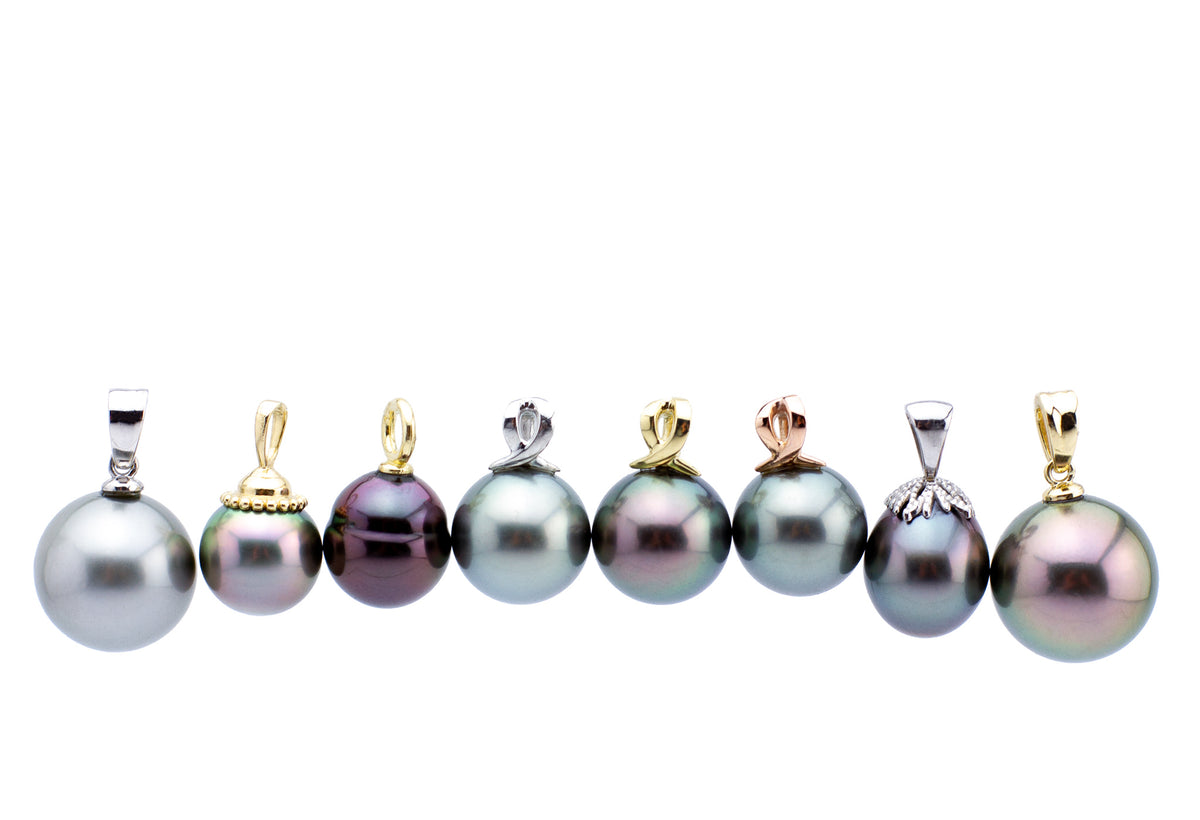About Tahitian Black Pearls

Here are a few basics about Tahitian black pearls. Find out more on our History of Tahitian Pearls, Choosing a Pearl, Sustainable Pearls and Tahitian Pearl Farming pages.
Black Pearl Terminology
Tahitian black pearls are produced by the Pinctada margaritifera oyster, also called the Black-lip pearl oyster. "Tahitian" is an appellation designating that pearls have come from French Polynesia, much like Bordeaux wines can only come from Bordeaux, France. Pearls produced by the same oyster elsewhere in the word, such as Fiji and the Cook Islands have not gone through the same strict exportation and quality restrictions as Tahitian pearls (see the Nacre Thickness section on our page about Choosing a Pearl).
Tahitian Pearls and Other Pearls
As far as commercially farmed pearls are concerned, Tahitian pearls are considered to be the second most valuable and the second largest in size in the world, just behind Australian South Sea Pearls. However the Tahitian pearl color range is much greater than those found in South Seas pearls, which are only found in shades from white to light silvers and golds.
The beautiful colors of Tahitian pearls are entirely natural, unlike black akoya pearls and many flashy-hued freshwater pearls, which are irradiated or dyed. Tahitian pearls also have a minimum of .8mm nacre (pearly shell) coating over their bead nuclei; akoya pearls (the classic Japanese white pearls) for example have an average of .35mm of nacre.
